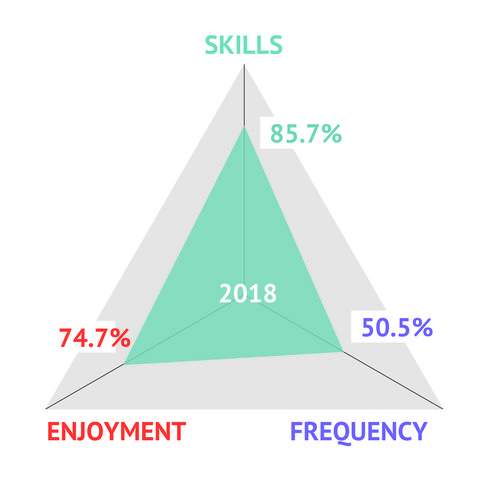
The ROGO Index was published for the first time in December 2017, following an in-depth review of international evidence on what it means to be a reader at age 11. The Index is based on a new tripartite model of reading well at age 11, developed by the Read On. Get On. coalition.
The model asserts that a good reader has strong cognitive skills (including phonics and decoding), affective processes (including high levels of reading enjoyment) and reading behaviours (including reading outside school on a daily basis). The ROGO Index measures how well 11-year-olds in England are reading across these three areas using data from the Department for Education, GL Assessment, Renaissance and the National Literacy Trust.
The ROGO Index 2018 shows that:
- Children’s daily reading levels have risen slightly since 2016/17 (50.5% in 2017/18 from 49.5% in 2016/17)
- However, daily reading levels continue to be an area of great concern, lagging significantly behind levels of reading skill (85.7%) and enjoyment (74.7%)
- Children’s levels of reading enjoyment have remained relatively unchanged (74.7% in 2017/18 vs 74.9% in 2016/17)
- National curriculum reading scores increased by 3 percentage points over the past year (72% in 2016/17 to 75% in 2017/18), while reading scores from GL Assessment (85.4% in 2016/17 to 86.3% in 2017/18) and Renaissance (85.3% in 2016/17 to 85% in 2017/18) have remained relatively stable
- Girls continue to outperform boys in all areas of reading, with a particularly marked gap in daily reading levels (57% vs 44%)
ROGO Index reports
- ROGO Index 2018 (December 2018)
- ROGO Index 2017 (December 2017)
- What it means to be a reader at age 11: valuing skills, affective and behavioural processes - a literature review (December 2017)